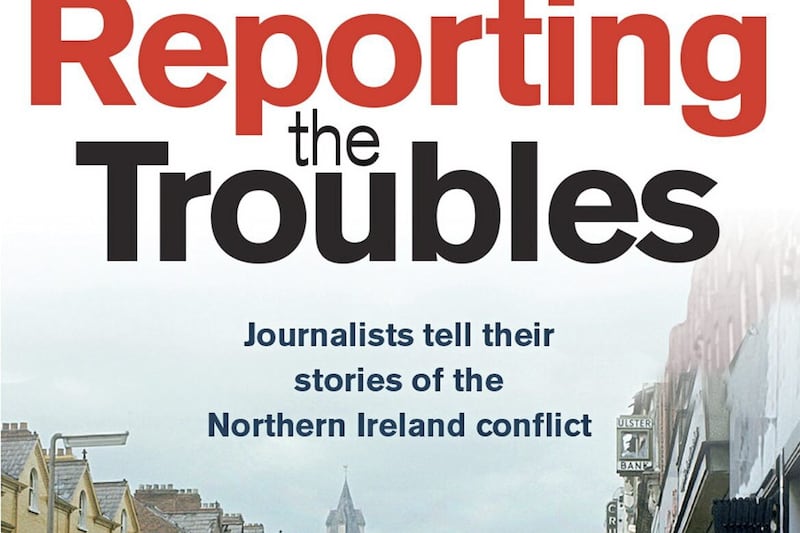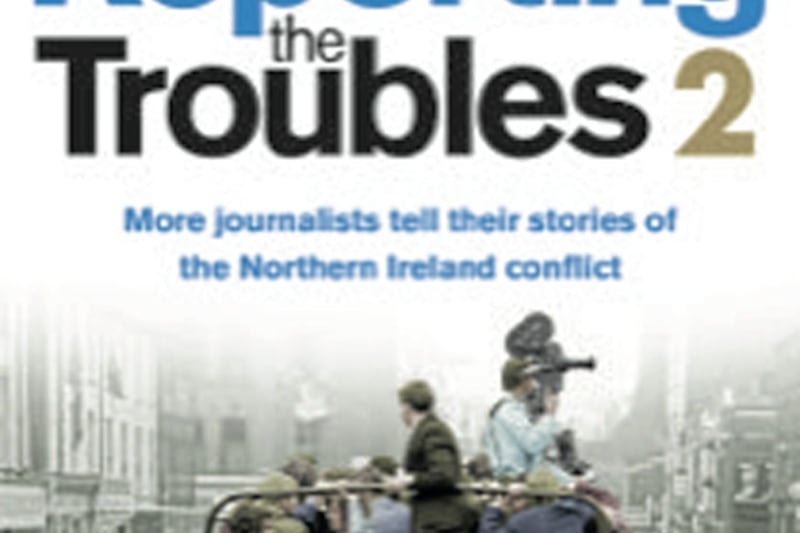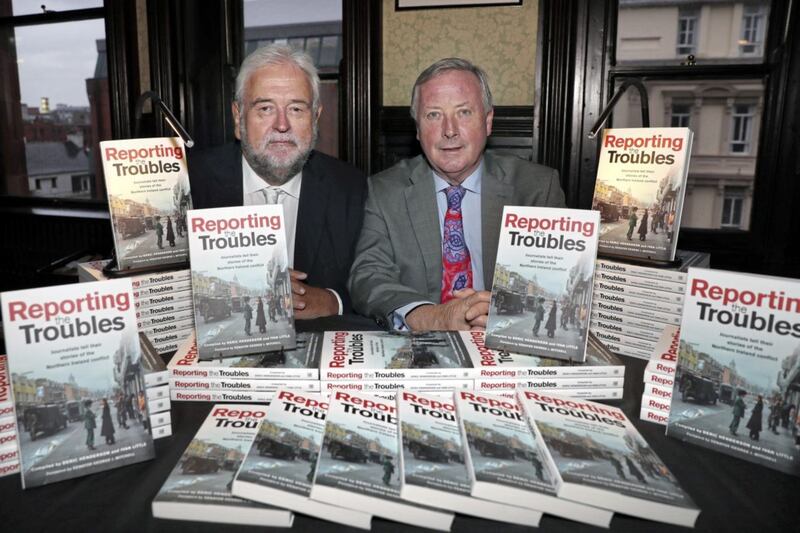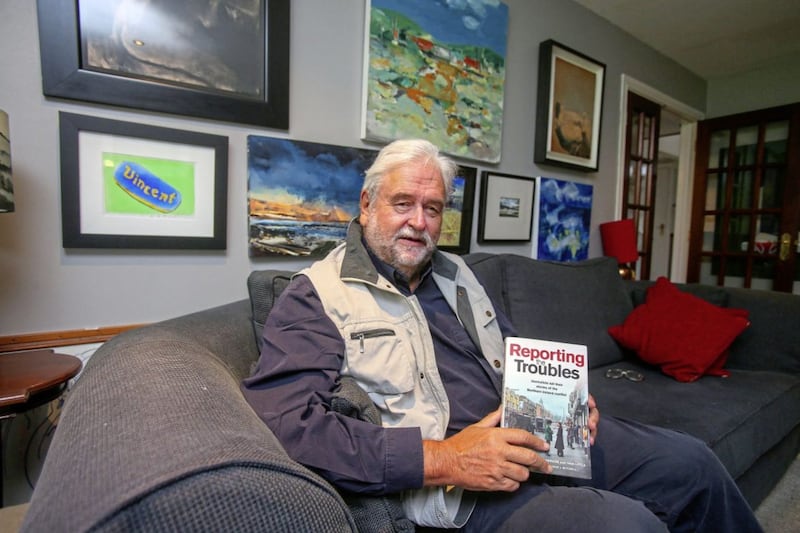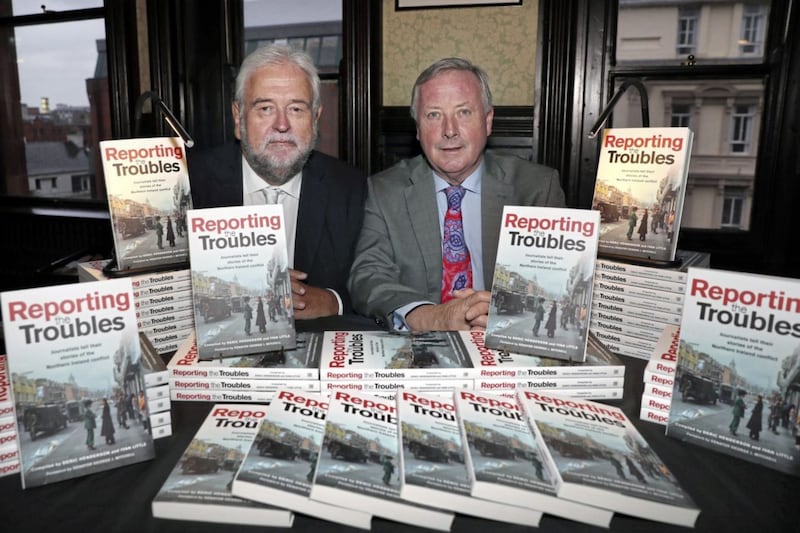HE SUSPECTS he has covered more murders and funerals than almost anyone else in a 30-plus career on the frontline of Northern Ireland's Troubles, so 'Big Ivan' Little says a coping mechanism was fundamental to the job.
"My coping mechanism was simple," recalls the journalist, author and sometime actor, who along with contemporary, Deric Henderson, has compiled a new book based on their own and the personal accounts of 66 other journalists who witnessed the horrors first hand.
"When I left Havelock House [former home of UTV], I shut the door mentally and tried not to take the job home with me," he says. "It was the only way to get through those days, but on the worst days it didn't work out like that."
He is referring specifically to the three times he has cried in his long career reporting the atrocities; when the professional facade slipped – not on camera – and the sadness came spilling out.
They relate to the UFF shootings at Sean Graham's bookies on the Ormeau Road in 1992, an interview with Gordon Wilson who survived the Enniskillen Remembrance Day bombing in 1987 and meeting Lily McDowell, the most severely injured victim in the La Mon Hotel atrocity in 1978.
In this, the 50th anniversary year of the 1968 civil rights clashes in Derry, Little and Henderson felt the time was right to put the reporters under their own searing spotlight.
"When we starting ringing people up to see if they would like to write their own story behind the story, we were amazed by the generally enthusiastic and positive response," Little says. "I think, for many, it gave them a chance to seriously examine their feelings about what they saw and what they felt for the first time.
"The book is not an analysis of what happened; nor is it political, it's just a collection of personal stories and I think if there is a commonality, it is the way even hard-nosed, professional, experienced journalists were deeply affected by the things they witnessed.
"When you come face-to-face with the raw grief of a widow or see a bewildered child walking behind a coffin with a Teddy bear – that gets to you. You wouldn't be human if it didn't."
But, even in the belly of pain and chaos, come surprising, revelatory moments of humanity and unexpected kindness. A late arrival at a pre-arranged press interview with Enniskillen's Gordon Wilson is cited as one memorable example by the book's co-editor.
"I arrived late because I had been with my own daughter at a centotaph service in London just the day before," Little recalls. "Gordon, graciously, still agreed to let me interview him, but when he started speaking about his daughter, Marie, and her dying words, I couldn't hold it together.
"I couldn't help thinking of me and my own daughter standing at the cenotaph in London. Gordon could see I was struggling and it was him who ended up comforting me. Such generosity of spirit I will never forget."
Judging by the many, moving accounts from Ivan and Deric's willing contributors – among them household names including Kate Adie, Eamonn Holmes and Gloria Hunniford – the memories, good, bad and ugly, live on too.
From the first entry from Martin Cowley, former London editor of The Irish Times, who relives his experiences on Duke Street, Derry, on October 5 1968, the reader is taken through many of the worst headlines: from Bloody Sunday, to the Orange Order stand-off at Drumcree, the Maze jailbreak, the Omagh bombing, and the murder of Martin O'Hagan, the journalist whose job ultimately cost him his life.
But, among the traumatic, emotive accounts, there are also lighter moments, as recounted by the then foreign affairs correspondent for the BBC, Martin Bell, who remembers his time in Northern Ireland with affection – despite being sent a memo from a group of loyalists in Dungannon who warned they were going to send him home in a coffin.
"A lady in mid-riot on the Newtownards Road set upon me with an umbrella, complaining that we were filming something that was not happening," he writes, adding that on another occasion, after a civil rights meeting at Limavady Town Hall, he escaped through a lavatory window and had to "hoof it across the fields".
And, perhaps summing up the surreal madness of it all, Bell recalls one "citizen of Belfast" ringing up the BBC complaining that an explosion in her street had not been shown on television.
Such is the shady colour of life in Reporting the Troubles which throws a different light on the shadows that still haunt those who brought them to our doorstep for more than 30 years.
:: Reporting the Troubles, with foreword by chair of the peace talks, Senator George Mitchell, is published by Blackstaff Press and in the shops now.


